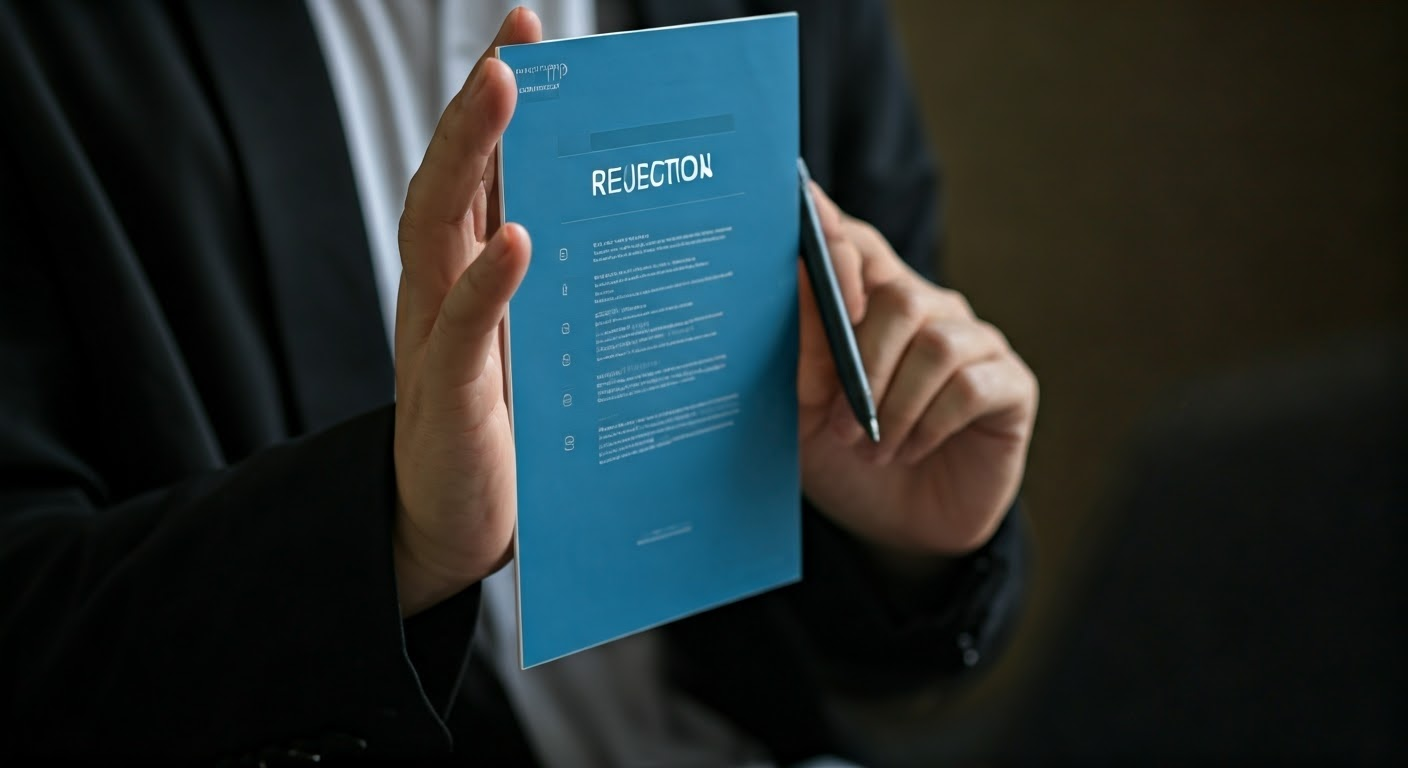Last Updated on February 23, 2025 by admin
Here’s something surprising: using a well-crafted rejection email template can truly transform the hiring process. In my experience, a thoughtfully constructed template not only communicates a clear message but also reflects the company’s values. This is essential for maintaining a positive candidate experience, even when the outcome isn’t what they hoped for. A rejection email is more than just a formality; it’s an opportunity to leave a lasting impression. The Professional Email Template
Reflecting on my time in HR, I’ve found that personalized rejection letters can turn a missed opportunity into a potential future connection. A good match might not always be evident immediately, but professionalism ensures candidates see the company in a positive light. This article will delve into strategies for crafting effective rejection email templates, ensuring each message is a suitable position for maintaining goodwill and enhancing the company’s reputation.
Understanding the Importance of Rejection Emails

Compared to previous understanding, rejection emails might seem like a minor part of the hiring process. Yet, they play a crucial role in shaping the overall experience for job candidates. A well-crafted rejection email can make a significant difference in how applicants perceive your company. Read more: Blog.
Rejection emails are not just about delivering bad news; they are an opportunity to enhance your employer brand. When I consider my experiences, I find that sending thoughtful rejection emails makes candidates feel respected. This is essential because even if they don’t get the job, they might be suitable for other future openings or future opportunities. Such candidates often feel encouraged to apply again, knowing they were treated with dignity.
Moreover, a clear and considerate job rejection email helps candidates understand the application process better, which can be invaluable in their job search and future endeavors. This level of communication fosters transparency and shows that the company values their effort and time. The Invoice Email Template
What’s particularly interesting is that these emails also offer insights into the application and interview process. By providing feedback, even briefly, you can help candidates improve and feel encouraged to apply for roles in the future. I’ve found that this approach not only supports candidates in their growth but also keeps the door open for potential re-engagement.
In summary, integrating thoughtful rejection emails into your hiring strategy is more than a formality; it’s a chance to nurture relationships and maintain a positive reputation. By handling this aspect with care, you ensure that every interaction counts towards building a strong employer brand.
Crafting a Rejection Email Template

New research indicates that crafting a rejection email template is crucial for a respectful hiring process. A well-written rejection email not only delivers the bad news but also leaves a positive impression on the candidate. Let’s explore the essential components of a rejection email template. Read more: Novoresume.
First, the subject line should be clear yet considerate. For example, “Thank You for Your Application” is a gentle way to introduce the message. The core of the email template should acknowledge the candidate’s effort and express gratitude for their participation in the interview process. This recognition helps in maintaining a respectful tone throughout. The Smart Way to
Personalization is key. Address the candidate by name and, if possible, mention something specific from their application or interview. This small touch can soften the impact of the rejection and show that the decision was not made lightly.
It’s important to explain the reason for moving forward with another candidate. By offering a brief insight into the decision-making process, you provide closure and demonstrate transparency. This clarity can encourage candidates to share feedback about their experience, which can be valuable for refining your hiring process.
Finally, end on a positive note. Encourage candidates to apply for future positions and thank them once again for their interest. Such an approach not only respects the candidate but also keeps the door open for future opportunities, enhancing the overall candidate experience.
Crafting a thoughtful candidate rejection email template is not just about delivering bad news; it’s about building a bridge for potential future interactions. This approach ensures that your hiring process remains professional and considerate at every stage. The How To Write
Latest Insights and Developments
Rejection email templates are crucial in maintaining professional and respectful communication, especially in recruitment and business negotiations. As digital communication evolves, the effectiveness of these templates continues to be scrutinized and improved.
Key Research Findings
Recent studies have revealed several crucial insights about rejection email templates:
- Personalization increases the likelihood of a positive recipient response.
- Clear reasons for rejection improve candidate perception of the organization.
Important Statistics
Data highlights the importance of well-crafted rejection emails:
- 85% of job seekers appreciate receiving feedback with their rejection.
- 42% of recipients are more likely to apply again if the rejection email is personalized.
Latest Developments
Recent trends and innovations in rejection email templates include: Email Generator: The Missing
- AI-driven tools are being used to tailor email content for each recipient.
- Companies increasingly adopt a compassionate tone to maintain brand reputation.
In conclusion, the evolution of rejection email templates underscores the importance of empathy and clarity in communication. These insights can guide organizations in refining their rejection processes, ensuring they leave a positive impression on recipients.
Providing Constructive Feedback in Rejection Emails
As you navigate this stage of the hiring process, offering constructive feedback in rejection emails can significantly impact both the candidate’s experience and your positive employer brand. By addressing the candidate’s areas for improvement, you not only aid in their professional development but also enhance your company’s reputation. This naturally leads to a more engaged talent pool for future openings.
Benefits of providing feedback can’t be overstated. Candidates appreciate insight into their performance, which can boost their confidence and guide their future professional endeavors. Sharing these insights demonstrates genuine interest in their growth, turning a potentially negative experience into a constructive one. This, in turn, leaves a good impression and reinforces a positive employer brand. Better Counter Offer Email
When crafting feedback, specificity is key. Highlight strengths and areas for improvement clearly and concisely. An example would be noting a candidate’s strong analytical skills while suggesting they expand their project management expertise. This precise approach ensures your feedback is actionable and valuable. Moreover, including a personalized email signature can make your message feel more human and less templated.
Encouraging candidates for future possibilities is another crucial aspect. Expressing your interest in considering them for future openings can keep them engaged and interested in your company. This approach not only maintains a talent pipeline but also emphasizes your commitment to their professional journey.
Finally, ensure your email signature includes your contact information, encouraging further communication. This openness fosters a sense of inclusion and often results in candidates feeling more positive about their experience. By investing in this thoughtful approach, you pave the way for meaningful connections and potential future collaborations.
Sample Rejection Email Templates
Medical experts confirm the importance of effective communication in maintaining positive relationships, even in rejection scenarios. This naturally brings us to crafting rejection email templates that are considerate and respectful. Here are some examples:
- Early Stage Rejection: “Thank you for your recent application. We appreciate the time and effort you invested. Although we have decided to move forward with other candidates, we encourage you to stay connected for future opportunities.”
- Post-Interview Rejection: “Thank you for attending the interview. We were impressed by your skills, but we have chosen to proceed with other qualified candidates. We wish you success in your future endeavors and value the time and effort you dedicated to the process.”
- Final Stage Rejection: “We appreciate the time and effort you put into the final interview. While there were many qualified candidates, we regret to inform you that we have decided to move forward with another applicant. Please feel valued knowing your skills are impressive, and we hope to provide individual feedback soon.”
Customizing these templates requires understanding the candidate’s journey and offering individual feedback when possible. This approach ensures candidates feel valued despite the outcome. It’s essential to provide individual feedback to enhance their experience and encourage them to apply for future roles. Moreover, timely communication through a well-crafted rejection letter can soften the disappointment and maintain a positive relationship.
In my experience, personalized rejection emails lead to better engagement. Always remember, the time and effort spent on crafting these messages is crucial for maintaining a positive employer brand and potentially converting past applicants into future candidates.
Maintaining a Positive Candidate Relationship Post-Rejection
Clinical data shows the importance of maintaining open communication with candidates, even after sending candidate rejection emails. Building on this concept, keeping candidates engaged post-rejection ensures a robust talent pool for future roles. A crucial aspect is to provide constructive feedback. This feedback not only aids in the professional growth of candidates but also leaves a positive impression of the company name.
Adding to this insight, the recruitment process doesn’t end with a rejection. Instead, using this as a stepping stone for future hiring can be beneficial. This shift created by consistent communication can make candidates feel valued, encouraging them to apply for future positions within the company name. Moreover, research shows that a well-maintained relationship could significantly impact the company’s talent pool.
To further illustrate, here are some key points:
- Provide honest and constructive feedback to improve candidate experience.
- Invite candidates to join professional networks or future company events.
- Regularly update candidates about the next stage of hiring opportunities.
Effort in this area pays dividends. As a direct result of these efforts, candidates may become advocates for the company name, enhancing its reputation. This naturally leads to a more positive experience for everyone involved, and it helps in shaping a bright future for the organization. Consequently, these steps ensure that the future recruitment process is smoother and more efficient, paving the way for future success.







